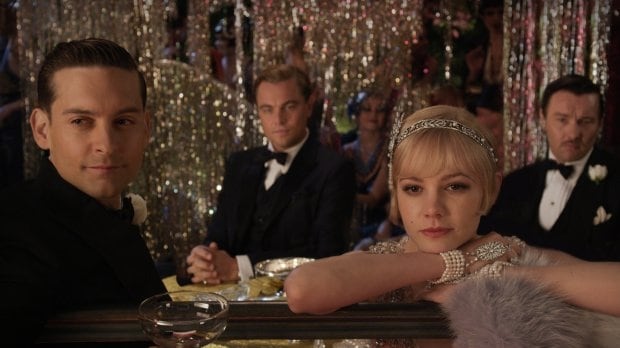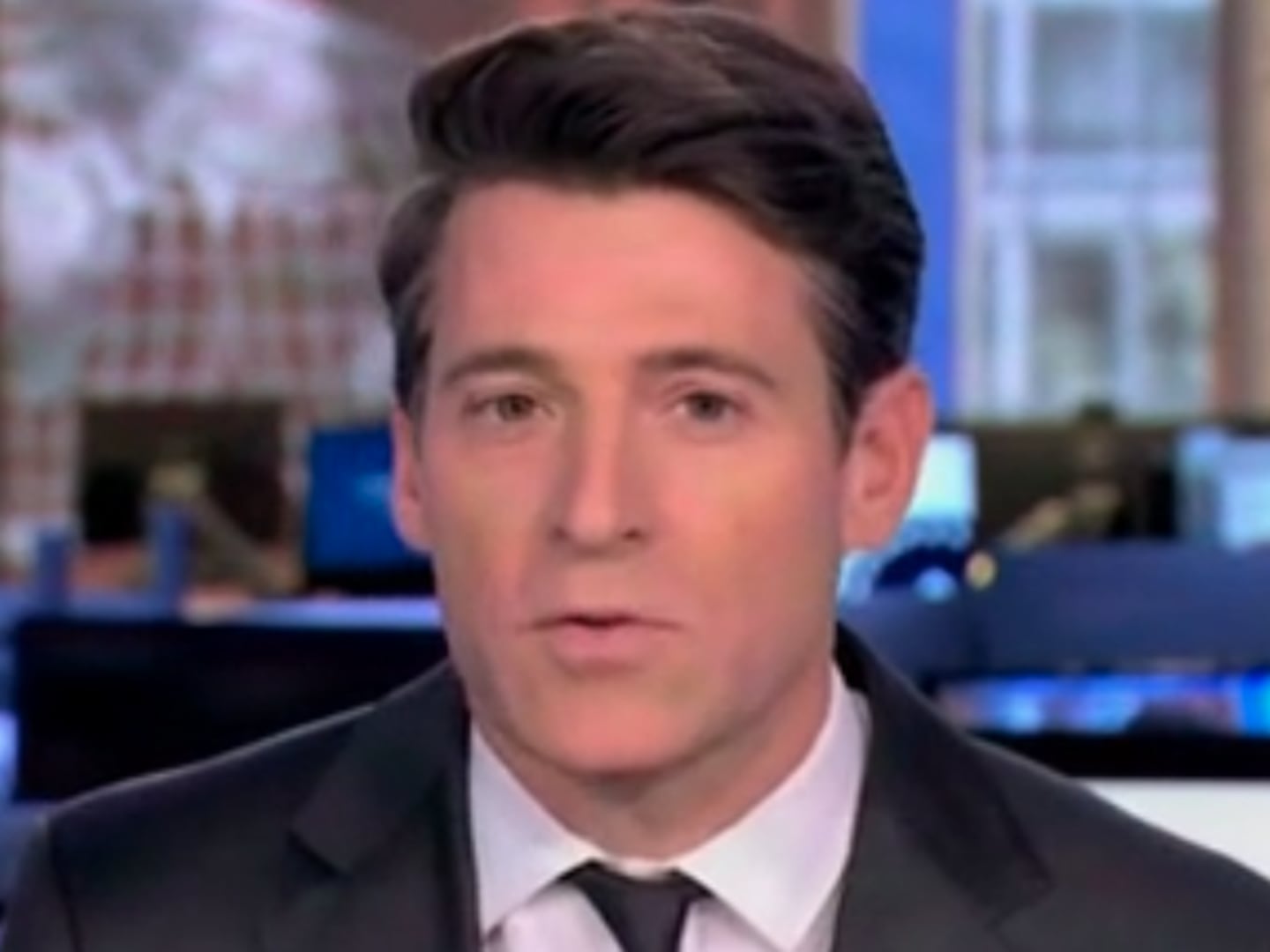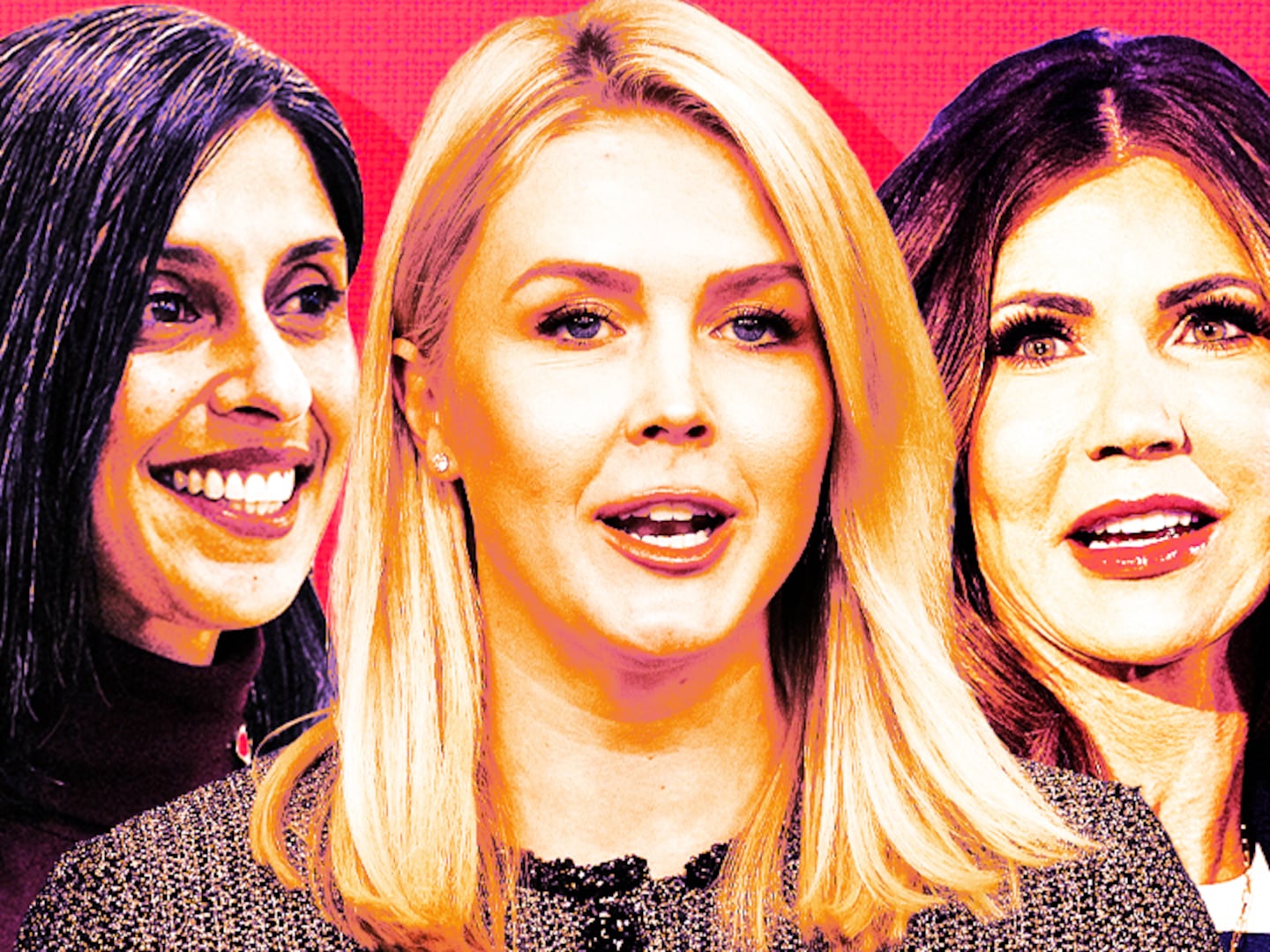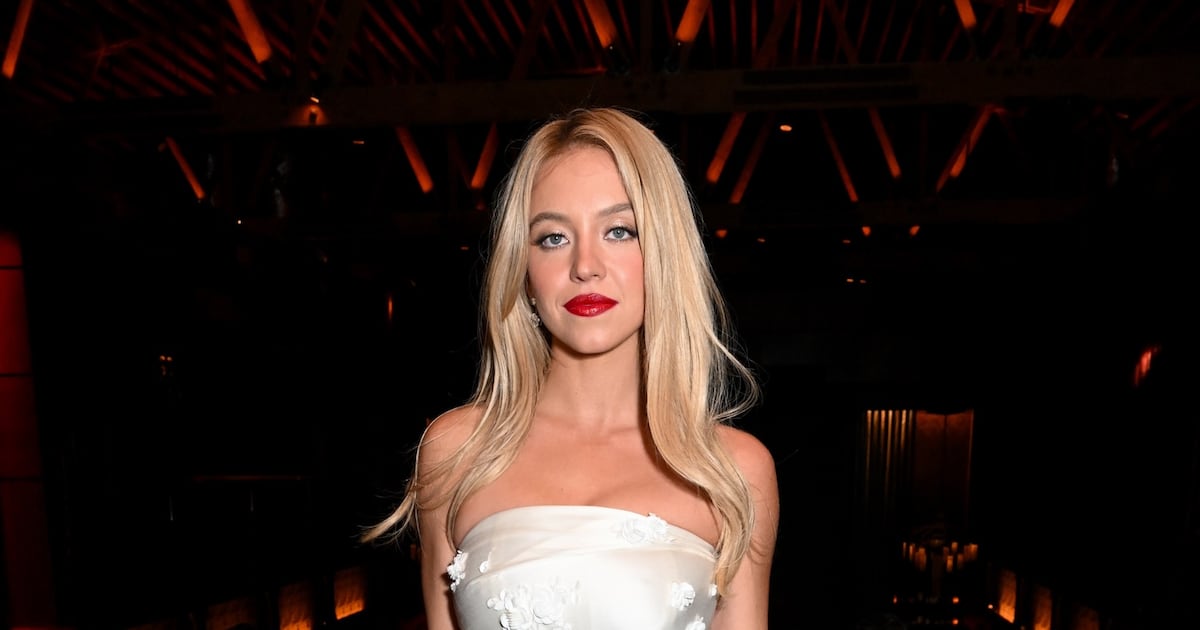Is there any female character in American literature more coquettish and coveted than Daisy Fay Buchanan?
She’s the most desirable debutante, the ever-evading maid. She’s warm, feverish, thrilling, intoxicating—a siren, an enchantress, a blossoming flower. She’s Galahad’s chalice; she’s Guinevere and Grail. She’s the quintessential Southern belle, cool in her white dress with her white mansion and her little white mobile. She’s the enchanted object, the great American dream, all bright eyes and a voice full of money—and of course she’s the light, that green light, drawing men, mothlike, to her flame. She’s the golden girl and the incorruptible angel and all the Platonic ideals that artists and poets throughout the great ages have required their muses to be.
She’s also—at least for many of The Great Gatsby’s readers—a rather unpleasant inamorata, at best infantile and impressionable, and at worst, possibly selfish to the point of pathology. In his afterward to the 1992 edition, publisher Charles Scribner III writes that Fitzgerald blamed Gatsby’s initial commercial failure on the fact that “the book contains no important woman character and women control the fiction market at present.”
Seeing as how Daisy is at the heart of the novel and of Jay Gatsby’s very existence, we can only infer that F. Scott meant his book contained no sympathetic woman character. Edwin Clark, writing the first New York Times review of Gatsby in April 1925, seemed to agree: the East Eggers, he said, had a “meanness of spirit, a carelessness and absence of loyalties…dumb in their insensate selfishness, and only to be pitied.”
Carelessness—which is also Nick Carraway’s final assessment of the Buchanans—happens to be among the nicer things that critics have said about Miss Daisy née Fay. Academics have compiled lists of the brackish opprobrium slung at Gatsby’s girl: she’s a woman of “vicious emptiness,” of “criminal amorality,” a “destroyer” and “femme fatale,” the “villain-heroine” who stands as both “Dark Lady and Fair, witch and redeemer.” Alfred Kazin found her “vulgar and inhuman.” A literary friend judged her “vapid, naïve,” a superficial “Lotus Eater” narcoticized on privilege and blind admiration.
What is it about Daisy that stirs up such strong and extreme opinions about her essential nature? Maybe it’s that we, like Nick Carraway, can’t quite grasp what makes Daisy tick.
She’s always elusive, shifting so easily between flirtatiousness and jaded scorn. One moment, she appears to be roiled by turbulent emotions; the next, she’s smirking at her guests and making them doubt her basic sincerity. Her moods are labile, fleeting, effervescent as a champagne bubble. She’s associated with reflective, diaphanous, mercurial things—light, water, the waxing moon.
In Trimalchio, the forerunner to The Great Gatsby, Fitzgerald elaborates on the scene where Gatsby and Daisy disappear into the garden together during one of our hero’s midsummer fêtes. They talk about the possibility of her leaving her brutish beau Tom, and Gatsby blurts out, “You don’t know what you want.” Daisy does not answer him, for indeed, she does not—as becomes so painfully clear during the showdown between her two men at the Plaza.
But there’s something more than mere indecisiveness that drives Daisy Buchanan. There’s a certain theatrical caprice to her, a showy impulsiveness, an exaggerated whimsy. It’s not just that her emotions are volatile—they verge on artifice. The actress Carey Mulligan, who plays Daisy in Baz Luhrmann’s new film adaptation, relied on this penchant for drama when she concocted her “Daisy cocktail”: “It’s that kind of feeling: I’m-so-little-and-there’s nothing-to-me, watch-me-have-nothing-to-me,” she told Vogue. “She feels like she’s living in a movie of her own life. She’s constantly on show, performing all the time … She’s in her own TV show. She’s like a Kardashian.”
The word, in our DSM-IV era, might be histrionic. Diagnostic criteria include: displays of rapidly shifting and shallow emotion. Interactions with others characterized by inappropriately seductive or provocative behavior. (“Are you in love with me?” Daisy is always coyly murmuring to the men around her—knowing, of course, that they are.) Speech that is excessively impressionistic. (“How gorgeous!” “You absolute little dream.”) A person who is always acting, always ‘on’ for her followers.
Indeed, Daisy seems to enjoy staging provocative little scenes—usually with her friend Jordan Baker and her cousin as the audience—without expecting any negative consequences to come from her play-acting. “Her eyes fell on Jordan and me with a sort of appeal,” Nick says of the moment Daisy is cornered by Gatsby’s insistence that she tell Tom she never loved him, “as though she realized at last what she was doing—and as though she had never, all along, intended doing anything at all.”

Carey Mulligan as Daisy Buchanan in The Great Gatsby.
Warner Bros. PicturesAs Tom, Nick, Gatsby, and her many other suitors discover, Daisy’s affections cannot be relied upon. Indeed, this is precisely what makes her so desirable and frustrating to the boys. They are all hoping to be the one to finally pin her down, to be the only fellow she ever loved, to have that thrilling voice purring to them alone. She is like Lady Fate of the ancient Greeks, forever beguiling and tormenting men by giving her fortune’s wheel one more spin, bringing the lowly to the top of her affections and snatching away her riches even from kings. Or maybe she’s more like a character out of Shakespeare, who also associated his most tantalizing and changeable heroines with water and moonlight. Like Cleopatra reclining on that gilded Nile barge, Daisy knows the power of spectacle. And like Cressida, her fickleness is the stuff of legends. If I am ever false, says the wanton Trojan to her lover Troilus, just before she heads off to the Greek camp to collect kisses from the enemy, “let them say, to stick the heart of falsehood, ‘As false as Cressid.’” One might add: as false as Daisy.
Like the faithless Cressida, Daisy is most strongly associated with the symbol of money. Her voice is flush with cash (a description that constitutes one of the only memorable lines we hear from Gatsby’s own mouth, as Lionel Trilling famously noted) and she represents that elite and ancient wealth from which Gatsby and his nouveau riche pals over in West Egg, with their Irish and Italian and German last names, will forever be excluded. Class and worth are strong themes in the novel, and they are ultimately what keep Gatsby and Daisy apart. To Tom, Daisy is worth $350,000 in pearls (around $4.7 million in today’s money). To Gatsby, she’s worth a whole lot more than that, but he, too, expects on a very basic level that her affection can be bought.
“She is for sale,” Matthew Bruccoli notes in a preface to the 1992 edition of Gatsby, “but he doesn’t have the right currency.” Naturally, the fact that other men desire her wildly increases her worth in both Gatsby and Tom’s eyes. She is rare—“a hothouse flower,” as Leonardo DiCaprio reportedly described her at a casting call for his leading lady. They sure don’t grow ‘em like Daisy Fay in the North Dakota of James Gatz’s youth. And so the economics of supply and demand mean that a woman like Daisy—with her fine looks and breeding and her family wealth—can command quite a stratospheric price indeed.
Meanwhile, Nick might think Gatsby is worth “the whole damn bunch” of the Buchanans and their foppish, bored friends, but James Gatz doesn’t really believe the compliment. He’s terrified that he’ll always be “Mr. Nobody from Nowhere.” If only he could amass enough rubies and peaux de tigres and silk shirts to impress Daisy, to win and keep her, then maybe he’d finally achieve the apotheosis he’s been grasping after his whole life. Maybe he can recover those lost years, rewrite the past, rewrite himself, become a different man.
But time keeps on slipping, slipping, slipping, and Daisy is slipping, too, running quicksilver through his grasp—just like the money that flows so prodigally through the hands of Fitzgerald’s wasteful characters. And maybe that’s part of the problem with Daisy—because she can never be our pure grail, our Jazz-Age Beatrice, if she’s associated with something so dirty as money. Especially the type of underground money that Gatsby makes through his criminal rackets. While the love between the young Gatsby and the teenaged Daisy seems innocent and true, by the end of the book, it’s tawdry and ruined. Stained by blood, stained by adultery, stained by her equivocations and his shady lies. As H.L. Mencken wrote in The Baltimore Evening Sun in 1925, “social leader and jailbird, grand lady and kept woman, are here almost indistinguishable. We are in an atmosphere grown increasingly levantine.”
It may seem strange to associate Daisy—dressed in virginal white, with her white face full like a peony blossom in the autumnal starlight—with a kept woman, a common courtesan, but intimations of the brothel hover around the edges our Madonna. The book’s iconic cover, created before Fitzgerald even finished his manuscript, shows the face of a flapper—possibly Daisy—crying a tear that looks ever so much like the green light at the end of her dock. Her beautiful, sad eyes are formed out of the vulgar and voluptuous bodies of reclining nudes. Their figures are yellow and round, like bright shiny coins. So the “nice girl” (always in quotation marks) is suspected of being a loose woman at heart. Thus the tragedy of the book becomes the fact that Gatsby’s dream, his all-American, hopeful, verdant green dream, is founded on a terrible misunderstanding of the inner character, values and worth of his one true love.
***
Why did Fitzgerald craft his heroine with such ambivalent love-hate overtones? Perhaps because the woman who inspired Daisy provoked the same feelings—the yearning, the suspicion—in Gatsby’s author.
It’s a common misconception that Zelda Fitzgerald, the zany and probably bipolar wife of F. Scott, was the template for his Mrs. D. Buchanan. While Zelda’s personality seems to have provided a flourish here or there—and while The Great Gatsby is dedicated to her—most scholars agree that the real-life Daisy was a Chicago socialite named Ginevra King. Christened—like her female ancestors—after Leonardo Da Vinci’s painting “Ginevra de’ Benci,” King met Fitzgerald at a friend’s sledding party in his hometown of St. Paul. She was 16 and he 19, just home for the holidays from Princeton. They became instantly infatuated and exchanged months of breathless, giddy letters. “The moon is on my head again tonight,” King wrote to him in one. “Oh Scott … why aren’t we at a dance in summer now with a full moon in a big lovely garden and soft music in the distance.”

An undated photo of Francis Scott Fitzgerald.
APLike Daisy, King was a vixenish and capricious little tease. In her first letter, in January 1915, she signs off, “Yours Fickely sometimes but Devotedly at present—Ginevra.” As noted in a 2003 New York Times piece about King’s archived letters, this salvo “[set] the tone for their relationship, in which she alternately beckoned him to her and pushed him away.” In another missive, she writes to him devilishly, “I know I am a flirt and I can’t stop it.” A year later, in May 1916, King discloses that she and some boarding school girlfriends have been expelled for chatting with boys while hanging out of the windows of their dormitories—a transgression that gets them branded “bold, bad hussies” by the headmistress. Once (as she revealed to her daughter years later), King tells Fitzgerald that she has to return to Westover—and then sneaks off to meet some Yale guys in a different part of Grand Central. Fitzgerald, for his part never seems to trust her affections. He is forever asking for reassurances and grilling her about ex-boyfriends and other admirers and rivals.
Fitzgerald had reason to be nervous. While King wrote to him breezily about their shared dream of a “perfect hour” spent together and even once joked about elopement, she seemed to know quite early on that he could never be a serious suitor. Though Fitzgerald grew up among and socialized with the rich of St. Paul, his father was a failed businessman who lived off the dwindling wealth of his wife’s family. A girl like Ginevra—who crowned herself, along with three best friends, one of the “Big Four” debutantes of her hometown, the pearls of Chicago—could have her pick of the handsomest and flushest bachelors in the Midwest.
In 1916, a besotted Fitzgerald penned the words—said to him, or so the story goes, by King’s father—that would later appear in several movie versions of Gatsby, though never in the novel: “Poor boys shouldn’t think of marrying rich girls.” This reality must have been particularly painful to Fitzgerald. For even as he skewered high society in his writing, “there was a certain ambiguity in Fitzgerald’s attitude toward the ‘very rich,’” Lionel Trilling tells us. “We cannot be too simple about what a critic has recently noted, the artist’s frequent ‘taste for aristocracy, his need—often quite open—of a superior social class with which he can make some fraction of common cause—enough at any rate, to account for his own distinction.’”
Before long, the romance started to wane. By January 1917, it had fizzled for good and a year and a half later, King wrote to tell Fitzgerald about her engagement to the dashing and affluent William Mitchell, whose father did business with Mr. King. Like Tom Buchanan, Mitchell loved the polo ponies and hailed from the crème de la crème of Chicago high society. “To say I am the happiest girl on earth would be expressing it mildly,” she wrote. Fitzgerald sent back tepid congratulations, adding, “From all I’ve heard of him he must be one of the best ever—Doesn’t it make you sigh with relief to be settled and think of all the men you escaped marrying?” Later, Fitzgerald would say that King had dumped him ”with the most supreme boredom and indifference.” Still, he saved a newspaper clipping about Ginevra’s marriage in a scrapbook, along with her handkerchief. At the bottom of the page, he had scrawled, “The End of a Once Poignant Story.”
And so Fitzgerald lost his chance to woo and wed a “king’s daughter”—but for the rest of his life, she kept popping up in his fiction. He kept her name on a list of “feminine fixations.” Rumor had it that for many years, her memory would bring tears to his eyes. As Arthur Mizener wrote in his biography of Fitzgerald, The Far Side of Paradise, F. Scott “invested a good deal of his feeling for the promises of life” in Ginevra. Fitzgerald even seems to have built several scenes in Gatsby around a short story King sent him back in 1916, in which she imagined a rich, bored wife seeking out an old love. The reunion goes poorly, and she laments that “the vision of a perfect hour—She—Scott—the quiet dream fire—perfect peace, for an hour only and now this was fading away like a spent rose.”
It’s impossible not to think of Gatsby and Daisy cuddling in Louisville on the last afternoon before he deploys to France. “They had never been closer in their month of love nor communicated more profoundly one with another,” Fitzgerald writes. “He sat with Daisy in his arms for a long, silent time. It was a cold fall day with fire in the room and her cheeks flushed.” Years later, in 1937, Ginevra and Fitzgerald met once more—and for the last time—in California. He was trying to make it in Hollywood and conquer his alcoholic demons. He seemed reluctant to attend the rendezvous. “She was the first girl I ever loved,” he wrote to his daughter. “And I have faithfully avoided seeing her up to this moment to keep that illusion perfect.” The meeting went poorly—Fitzgerald fell off the wagon and when Ginevra asked which of his characters were modeled after her, he reportedly replied to his dream girl, “Which bitch do you think you are?”
Even in jest, these words seem the slings and arrows of a broken heart—perhaps melodramatic, perhaps justified. Scholars have long debated whether King really loved Fitzgerald in return. Her private diary—which was donated to Princeton after her death—indicates that she was something of a smitten kitten, at least in those giddy first days. “Scott perfectly darling,” she wrote in January 1915. A day later: “Am absolutely gone on Scott!” Soon, she would confide to dear diary that she was “madly in love with him.” However, King’s daughter insisted to the Times that her mother was “never in love” with Fitzgerald. “She enjoyed him and said he was very bright, very witty,” Ginevra Mitchell Hunter said. “She said he was always on the outside, looking in.”
Regardless, the portrait of King that emerges from her letters makes her into a slightly more sympathetic figure than her literary counterpart. She’s funny and ballsy, a little naughty and thrillingly vivacious. Can we really blame a 16-year-old girl for falling in and out of love as quickly as the seasons turn? Is she at fault for the fact that all of her swooning suitors idealize and project upon her? Should we pity her, even a little, for not having had the courage or desire to break free of her social caste and love whomever she pleased? And should we be asking these questions about Daisy Fay, as well?
***
Of the many ‘what-ifs’ one can play with The Great Gatsby—what if Daisy had never suggested going into town that fateful day; what if Gatsby had just pulled over the yellow car, hopped into the driver’s seat and explained to the police that Myrtle’s death was all a big accident—one of the most poignant is whether Gatsby and Daisy would have ended up together if class and money had been irrelevant matters. Would she have chosen to marry Gatsby if he’d already been a moneyed Ivy Leaguer at their first meeting? But if he’d been to the manor born, would Daisy have still seemed so remote and alluring? Flipped on its head: would poor boy James Gatz have loved Daisy if she’d been a beautiful, charming but threadbare gal from the shores of Lake Superior?
The answer, assuredly, is no. For it wasn’t just that she was a “nice” girl who enjoyed gay, fine parties; it wasn’t just that “many men had already loved Daisy” which “increased her value in his eyes.” It was that she could vanish “into her rich house, into her rich, full life, leaving Gatsby—nothing.” It was that she made him keenly—excitedly—aware of the “youth and mystery that wealth imprisons and preserves, of the freshness of many clothes, and of [her], gleaming like silver, safe and proud above the hot struggles of the poor.” It was that she had the one thing money couldn’t buy—a family name, a pedigree, that “Nordic” bloodline that, in the early 20th century, still implied de facto superiority.

Carey Mulligan as Daisy Buchanan and Leonardo DiCaprio as Jay Gatsby in The Great Gatsby.
Warner Bros. PicturesGatsby loves Daisy because he is a man who wants to have and to be the best—after all, he believes he’s the son of God, sprung from the head of Deus himself. He wants to collect the most interesting people to fraternize at his parties. He wants his orchestra to play the latest, most popular music. He likes to hoard and hold fine, rare things—those imported silk shirts, those carbuncular rubies. Some critics say that Gatsby amasses his wealth only for love—that it’s all a grand gesture to win over Daisy. Perhaps it started that way. But by the time they meet again, five years later, Daisy and worldly success have begun to merge in his mind. It’s why, in Trimalchio and in the Baz Luhrmann flick, Gatsby doesn’t want to run away with Daisy even at her suggestion. He doesn’t want to hunker down in Europe or on some exotic isle with his beloved. He’s no Rimbaud bohemian happy to relocate to a place where society’s rules don’t apply. In the end, Gatsby puts just as much stock in society’s rules as Tom Buchanan does. He believes in them. He worships them. Worships them as only a true outsider (or an oaf like Tom) could. He wants that ever-upward arc, that future glory, the “drums of his destiny”—and he wants high society to recognize those drums, too. He wants to get married in her parents' house in Louisville, he wants Daisy to move into his Coney Island-like palace (ideally, one imagines, without her child, the bles-sed pre-cious) and only then will his boyhood fantasies be satisfied.
It’s a tough choice for Daisy, even assuming she really does love Gatsby and does want to be with him. Because at the end of the day, Daisy is also something of a snob. She’d surely be disgraced and cast out of her social circle if she remarried her new-wealth lover. She’d be reduced to fraternizing with those West Egg Broadway types she seems to detest so much. “She was appalled by West Egg,” Nick notes as he watches Daisy’s revulsion during one of Gatsby’s parties. “This unprecedented ‘place’ that Broadway had begotten upon a Long Island fishing village—appalled by its raw vigor that chafed under the old euphemisms.” So as soon as she finds out that Gatsby may be making his wealth in backroom, bootlegging ways, she’s done with the whole flirtation.
Or maybe Daisy is just smart enough to realize that the kind of love Gatsby is grasping at might struggle to thrive in the institution of marriage. “What’s the difference between a husband knocking on a door and a sailor getting off a ship?” asked another great American shapeshifter from the Midwest. “About ten thousand volts.” Daisy and Gatsby are both romantics at heart—the signs are everywhere, from the nightingale blown in by the Cunard to all those belles dames sans merci. They both want to believe the world is founded on a fairy’s wing. And they both are intoxicated by the type of longing, yearning and eternal lack of fulfillment that characterizes romantic notions of ardor. In Trimalchio, Daisy even stretches out her hand back at Gatsby’s mansion just as he stretches his hand towards the green light across the bay.
Can we imagine two such impressionistic personalities locked in an arrangement that denotes the quotidian, the stable, the ordinary and everyday? Who would take care of the bles-sed pre-cious? How would they sustain those vital, life-giving illusions—the ones that Fitzgerald wrote about while working on Gatsby, “that give such color to the world so that you don’t care whether things are true or false as long as they partake of the magical glory?” Those illusions are lost at the end of the novel when Daisy decides to stay with Tom. But one wonders if they might have been eroded in a quieter way through the realities of daily life.
“His count of enchanted objects had diminished by one,” Nick Carraway says of the day when Gatsby and Daisy finally reunite. “There must have been moments even that afternoon when Daisy tumbled short of his dreams—not through her own fault but because of the colossal vitality of his illusion. It had gone beyond her, beyond everything. He had thrown himself into it with a creative passion, adding to it all the time, decking it out with every bright feather that drifted his way. No amount of fire or freshness can challenge what a man will store up in his ghostly heart.”
There’s also the matter of time, and aging. For a woman who has founded her whole identity on the ability to be irresistible to men, the notion of growing older must be a frightening thing indeed. Of course, Daisy is only 23 in the novel. But she already seems worried that a younger, more glamorous version of herself could show up to snatch away Gatsby’s heart. “In the very casualness of Gatsby’s party there were romantic possibilities totally absent from her world,” Fitzgerald writes. “What was it up there in the song that seemed to be calling her back inside? What would happen now in the dim incalculable hours? Perhaps some unbelievable guest would arrive, a person infinitely rare and to be marveled at, some authentically radiant young girl who with one fresh glance at Gatsby, one moment of magical encounter, would blot out those five years of unwavering devotion.” Or, as the song croons in the new Gatsby film: Will you still love me when I’m no longer young and beautiful?
Of course, she may be underestimating the power of youthful dreams. All the men in the novel are trying to recapture a past glory, an intensity that has now fled their daily lives. They all feel slightly empty inside. Tom Buchanan is a man who might “drift on forever, seeking a little wistfully for the dramatic turbulence of some irrecoverable football game.” Nick comes east because he’s bored back in his wheat fields after the grand games and excitements of war. Daisy’s power is so great because she is able to insinuate that “gay, exciting things” are always “hovering in the next hour.” After all, who wouldn’t want to live in a world infusé d’astres, a world ripe with romantic readiness, where every summer party holds the promise that around the next corner, in the next room, up the grand stairs, there they’ll be—our very own Daisy or Gatsby, the gold-hatted lover, the eternal soul mate, the orgastic future, the mind of God? Who doesn’t want to be “possessed by intense life,” to climb the ladder of the stars and “suck on the pap of life, gulp down the incomparable milk of wonder?”
Daisy Buchanan may want those thrills, but she’s also wise to the fact that nothing lasts forever. “The Gatsby thing is a wonderful escapade, but it is an escapade,” Carey Mulligan told Vogue. “It’s not real life. She’s smart enough to know when to come home.”
Even though one dies and one survives, in the end both Gatsby and Daisy have lost their youthful dreams, that sense of eternal possibility that made the summertimes sweet. And love her or hate her, there’s something to pity in that irrevocable fact.






